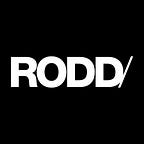Dialogue | 06. Inclusive Design | Why inclusive design makes sense for brands.
Hello and welcome to issue six of Dialogue.
More than ever, brands understand the need to cater to users with diverse needs. From an ethical standpoint, it’s a no-brainer. Yet, the commercial argument is often overlooked.
In this issue, we explore the potential of inclusive design in driving better outcomes for both businesses and consumers, casting the spotlight on the brands blazing a trail for a more inclusive future.
What is inclusive design?
Inclusive design is often confused with design for accessibility, old age or even a subset of healthcare design.
But rather than focusing on one particular group, Inclusive Design actually attempts to address the needs of the broadest spectrum of people — by putting extremes of people at the centre of the design process, irrespective of discipline.
Above all, it aims to achieve representational parity for normally excluded user groups alongside the more mainstream users within your community or target market.
“Inclusive design considers the full range of human diversity with respect to ability, language, culture, gender, age, and other forms of human difference. It empowers designers to create products whose experiences serve as many people as possible.” Adobe
In practical terms, it’s an approach that caters for all people equally, considering both permanent and temporary impairment, as well as trying to overcome language, culture, gender, age and technology exclusion.
Jeremy Myerson, Professor Emeritus, Helen Hamlyn Centre for Design at the RCA puts it well:
“Inclusive design is a strength-based approach. It’s designing with people as opposed to designing for them — not just older people or those in wheelchairs, but all kinds of people who are marginalized by the design process.”
Why should it matter to your design team and your brand?
By training your teams to think inclusively, you’re not only helping them develop empathy and understanding for diverse users, but unlocking a world of innovation and creativity.
In our experience, working with ‘extreme users’ is hugely rewarding, and serves as a reminder of what an innovative community the typically design-marginalised have become. After all, the daily challenges they face often necessitate outside-the-box thinking.
But it’s not just about feeling good about the work you’re doing. Beyond the satisfaction of designing truly better products, brands that strive for inclusivity will naturally achieve greater engagement with consumers looking to offer their brand advocacy. Addressing the extremes of your target audience also broadens your market.
Let’s explore some examples of inclusive design.
Oxo
Now synonymous with innovative kitchen tools, the US brand’s ‘good grips’ handle design came to life in 1990 when CEO Sam Faber noticed his wife’s difficulty gripping objects due to arthritis. The handle design was an instant hit, and became a signature of the brand for many years. Today, it’s recognised as an inclusive design classic, even though it was never specifically marketed as a solution for those with limited grip strength or disability.
FlyEase
Widely acclaimed as the world’s first hands-free shoe, the Nike Go FlyEase has inclusive DNA at its core: a laceless step-in shoe that aims to help anyone, regardless of age or ability, enjoy sport. To achieve their design, the sports brand relied heavily on the input of employees with disabilities, including two amputees. The result is a perfect blend of style and functionality that appeals to everyone.
Gov.uk
When Ben Terrett, RDI and the team at GDS set out to improve the UK population’s online experience of the Government, little did they know they would spearhead one of the most significant and inclusive digital overhauls of the last decade.
The unapologetically paired back, clear and arguably inclusive web design replaced 1,882 incohesive local government websites and created a simple solution that now deals with 1.03billion transactions per year.
Le Labo
Last year, a study by ad agency Bigeye found that half of Gen Z (and 56 percent of Millennials) believe traditional gender roles and labels are outdated. Further, over half of the respondents felt that gender stereotypes related to occupation, personality and products will be far less prevalent in the future.
In response, luxury fragrance brand Le Labo is creating a gender-neutral fragrance, featuring raw ingredients to create an olfactory experience. Progressive, sensitive, experimental or just very shrewd?
Good design is inclusive and Inclusive design is good design.
As a studio, we have always championed the idea that inclusive design should not be considered as a discipline in its own right at all — but one of the central tenets that make for all great design projects.
Good designers are intrinsically receptive to human pain points — whether it’s a short term frustration or a potential life threatening situation; they are adept at creating solutions that turn negative to positive. So next time you write a brief, or build user groups as part of your insight capture — stop and double check that your horizons are as wide as they need to be.
What Inclusive Design Can Do For Your Brand
We received our first award for inclusive design in 2008, and have implemented these principles in all of our client projects ever since.
